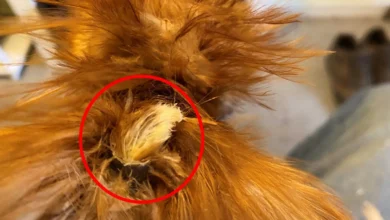Here is the list / menu of the most common problems that you may come across. Remember if you keep your birds well fed with a varied diet, and quarantine new birds, you should avoid most of the diseases, which leave just minor problems.
When buying new birds – whether it is a canary or any other bird — these are the signs we should be looking for before we spend our hard-earned money. Remember also that you should quarantine all new birds for as long as possible to avoid infecting the rest of your stock. Quarantine should be an absolute minimum of 30 days.
A healthy Canary should:
- Be active and brisk, and move freely around the cage or aviary.
- Be clean, bright and colorful in appearance.
- The eyes should be clear and bright.
- May not be singing but should be chirping and making noise.
A healthy Canary should NOT:
- Be puffed up and sitting motionless.
- Have watery or sore eyes; eyes may also be red and inflamed.
- Should not sneeze or shiver. Have watery discharge from the beak.
- Should not have droppings that are white and watery.
- Be “light” with little or no body weight. Have droppings/faeces around vent.
The following is a list/menu of the most common problems that you may come across. Remember if you keep your birds well fed with a varied diet, and quarantine new birds, you should avoid most of the diseases, which leaves just the minor problems (aforementioned from Fifecanary.org – Peter Ailwooda and James Hart):
Respiratory Signs, Chronic Depression, Weightloss: Aspergillosis (fungal Disease), bacterial infections/pneumonia, nutritional Deficiencies (Hypovitaminosis A), air sac mites, upper respiratory infections (bacteria/mycoplasma), inhaled toxins and lymphoproliferative disease, Canary Pox.
Genetic Diseases – Affecting primarily mutation and/or in-bred canaries
Isolated or Multiple Lumps – often on Wings / Back or Chest: Feather Cysts: Affecting primarily canaries that are heavily feathered, especially those with double-buff soft feathers, but is also seen in older canaries. Genetic.
Respiratory Signs / Tail-bobbing, Conjunctivitis / Mycoplasma infection. The organism causing mycoplasma infection only lives for only a day or two in the environment – however, this disease is serious. Several strains of this bacterium Mycoplasma have been identified. Mild mycoplasma infection usually resolves on its own, and antibiotic treatment of mild symptoms is not always necessary, but severe cases need treatment or death will result.. In many cases, they don’t die from the disease, but as they are blinded, they have trouble finding food and water which they need to fight off the infection.
Transmission: Contact between susceptible birds or infected surfaces (like feeders) .An unproven theory is that birds can be infected by contact with asymptomatic carriers (birds carrying Mycoplasma, but not showing symptoms)..
Prevention is best: Qarantine new birds ffor at least a month. If you see eye problems in any of your birds, remove the bird from the flock and watch carefully for respiratory problems.
Treatment:
In case of a simple eye infection, treating with an antibiotic ointment or eye drop, such as Terramycin, Tobramycin or TriOptic-S may resolve the problem. The eye lid may have to be pried open if swollen shut. If you are using an eye drop, you would let one drop roll into the eye and the excess roll off the back of the head. The ointment is actually easier to apply. You squeeze out a tiny drop of ointment and touch that drop directly to the open eye. Some of the ointment will stick to the eye.
If the cause is a sinus problem oral antibiotics may be prescribed in addition to eye ointments. Many cases have responded well to Tylosin. Tylan and Baytril are frequently prescribed, but some other antibiotics may work just as well.
Any treatment should be discussed with a vet.
Chronic Eye Problems / Proliferative Conjunctivitis / Keratis / Chronic Corneal Ulcers, Lid Depigmentation, Cataracts, Eyelid Distortion, Scar Tissue with Feather Loss on Head / Lethargy / Weightloss /Death:
Pox Virus – in some aviaries mortality involving this virus was 100%. Highly contagious. Primary carriers of this disease: mosquitoes and mites. There is no specific treatment – prevention is best. (Information on controlling mosquitoes can be found on the Green and Healthy Website.)
Antibiotics may be useful to control secondary infections, and vitamin A may aid in the healing process. Scarifying individual pox lesions may result in spontaneous remission. Topical application of astringent solutions such as mercurochrome or alcohol may be useful. Adenine arabinoside ointment a has also been recommended. Mild baby shampoo may be gently applied to any lesions around the eyes to remove scabs. Immune stimulants such as PEPE b and Echinacea may be of possible value.
Feather Loss from Head – Feather mites, male baldness, aggression, malnutrition, Pox virus.
Feather Plucking: Feather picking amongst canaries is most commonly by caused by overcrowding. Increase the available space per bird. If lack of space is not the problem, then check for parasites / insect activities.
Hormonal canaries may abuse their chicks by plucking their feathers. If they are doing it when the chicks are ready to fledge, the parents are eager to start another brood and are signaling to their young to “get out.” In this case, remove the fledglings and place them into a separate cage. If the canaries pull the feathers of nestlings that are not ready to fledge, then these canaries should be taken out of the breeding program (bad parents); or their eggs should be fostered with other broody canaries (or finches). Any eggs removed from “bad parents” need to be replaced with dummy eggs (right size and color) to stop them from replacing the eggs.
Masses on Wings and Body – Feather cysts. May be genetic or caused by damaged feather follicles.
Masses on Head – can be caused by the Pox virus, caseated sinus abscesses or mycoplasma.
Masses on Legs and Feet (Scaly Leg Disease) – can be caused by the Pox virus, insect bites, swelling from strangulated fibers or Knemidokoptes mites.
Scaly Legs / Swollen Feet – one common cause are Knemidokoptes mites (please refer to the “Scaly Leg / Scaly Face page for information), or scaling can be caused by genetic or nutritional factors. This scaling is also observed in older canaries and is an indication of a build-up of calcium salt between the scales of a canary’s feet and legs. Some younger canaries even can be predisposed to this calcium salt problem. Whatever the cause of the scaling, heavy scaling can result in reduced mobility and increased discomfort.
Abdominal Enlargement – Egg binding.
NEED A VET?
USA: Find Your Local Avian Veterinarian
Information contained on this website is provided as general reference only. For application to specific circumstances, professional advice should be sought.



